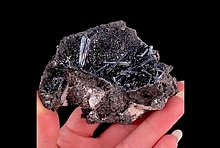Home PageAbout MindatThe Mindat ManualHistory of MindatCopyright StatusWho We AreContact UsAdvertise on Mindat
Donate to MindatCorporate SponsorshipSponsor a PageSponsored PagesMindat AdvertisersAdvertise on Mindat
Learning CenterWhat is a mineral?The most common minerals on earthInformation for EducatorsMindat ArticlesThe ElementsThe Rock H. Currier Digital LibraryGeologic Time
Minerals by PropertiesMinerals by ChemistryAdvanced Locality SearchRandom MineralRandom LocalitySearch by minIDLocalities Near MeSearch ArticlesSearch GlossaryMore Search Options
The Mindat ManualAdd a New PhotoRate PhotosLocality Edit ReportCoordinate Completion ReportAdd Glossary Item
Mining CompaniesStatisticsUsersMineral MuseumsClubs & OrganizationsMineral Shows & EventsThe Mindat DirectoryDevice SettingsThe Mineral Quiz
Photo SearchPhoto GalleriesSearch by ColorNew Photos TodayNew Photos YesterdayMembers' Photo GalleriesPast Photo of the Day GalleryPhotography
╳Discussions
💬 Home🔎 Search📅 LatestGroups
EducationOpen discussion area.Fakes & FraudsOpen discussion area.Field CollectingOpen discussion area.FossilsOpen discussion area.Gems and GemologyOpen discussion area.GeneralOpen discussion area.How to ContributeOpen discussion area.Identity HelpOpen discussion area.Improving Mindat.orgOpen discussion area.LocalitiesOpen discussion area.Lost and Stolen SpecimensOpen discussion area.MarketplaceOpen discussion area.MeteoritesOpen discussion area.Mindat ProductsOpen discussion area.Mineral ExchangesOpen discussion area.Mineral PhotographyOpen discussion area.Mineral ShowsOpen discussion area.Mineralogical ClassificationOpen discussion area.Mineralogy CourseOpen discussion area.MineralsOpen discussion area.Minerals and MuseumsOpen discussion area.PhotosOpen discussion area.Techniques for CollectorsOpen discussion area.The Rock H. Currier Digital LibraryOpen discussion area.UV MineralsOpen discussion area.Recent Images in Discussions
GeneralCalaverite ribbons?

4th Mar 2021 23:43 UTCAurum Williamson
Hi everyone,
I picked up this interesting calaverite and fluorite specimen a couple of months ago. It looks to be part of a pocket but there is something strange with the calaverite. As you can see in the picture the calaverite enters the specimen as silver ribbons. As they enter the pocket they branch out like coral with some areas with a coating of purple fluorite. My question? Is this a typical crystal habit that calaverite forms? I’ve scoured the web but can't find any specimen like this.
Thanks
5th Mar 2021 00:53 UTCKevin Conroy Manager

5th Mar 2021 19:31 UTCFrancis X Dzubeck
Why do you say Cresson Pit? This type of Calavarite is usually associated with the Gold Coin Mine in Victor, Colorado. If you look closely the purple crystals, they are not Fluorite bit Amethyst. In fact the entire matrix is Quartz some white some purple. This laminar crystal form usually is seen as a pseudomorph to Melonite from the same mine. Sylvanite also exists in the same laminar crystal form from the Doctor Mine on Ravel Hill and is in a Fluorite/Quartz matrix. Testing should determine the laminar crystal mineral as well as the matrix minerals.
Frank
6th Mar 2021 02:24 UTCKevin Conroy Manager
EDIT - I've added some text, a reference and some minerals to the page:

8th Mar 2021 20:51 UTCFrancis X Dzubeck
Accuracy of Mineral labels with respect to the Cripple Creek area is an issue. Statistically there are more mines in the Victor Area than the Cripple Creek Area. Yet fewer documented specimens. The hills and gulches around and in Victor were populated with numerous working mines (
https://pubs.usgs.gov/bul/0254/report.pdf ) and their output was significant. That link will also tell you about the common mineralogy of the area. From a Historical perspective, the Gold coin mine was unusual. The Gold vein find was made while digging the foundation of the Hotel in downtown Victor (https://www.victorheritagesociety.com/gold-coin-mine--part-of-the-woods-empire.html).
I am Mineral Collector that at one time or another has had to decipher an old label with a hint to the locality and then use the Mineral Specimen matrix to narrow down the mine locality. Certain Gold areas were prone to mislabeling such as Cripple Creek in Colorado and Roşia Montanã in Romania. A great deal mislabeling for older specimens is the result of using the locality of seller rather than the locality of the mine. A classic example are Gold specimens labeled from Abrudbánya (Hungarian for Abrud) in Alba County, Romania. The last time anyone actually saw or mined Gold in Abrud was the 14th century. Abrud is the county seat and the headquarters/home of local Mine owners/management such as the Mines in Roşia Montanã (Verespatak in Hungarian) and Bucium. No identity of any mines in Abrud can be found in any literature on mining in Alba County yet numerous Gold specimens exist even in photos on Mindat.
Please look closely at the matrix of this specimen, the matrix contains scalahedron crystals which would be very very rare for Fluorite. The reason I recommend testing is that the "Calaverite" may have pseudomorphed to Melonite which would mean that this is a very rich Melonite specimen.
Frank

9th Mar 2021 01:39 UTCRuggy Holloway 🌟

9th Mar 2021 14:12 UTCAurum Williamson




Mindat.org is an outreach project of the Hudson Institute of Mineralogy, a 501(c)(3) not-for-profit organization.
Copyright © mindat.org and the Hudson Institute of Mineralogy 1993-2024, except where stated. Most political location boundaries are © OpenStreetMap contributors. Mindat.org relies on the contributions of thousands of members and supporters. Founded in 2000 by Jolyon Ralph.
Privacy Policy - Terms & Conditions - Contact Us / DMCA issues - Report a bug/vulnerability Current server date and time: May 11, 2024 04:03:26
Copyright © mindat.org and the Hudson Institute of Mineralogy 1993-2024, except where stated. Most political location boundaries are © OpenStreetMap contributors. Mindat.org relies on the contributions of thousands of members and supporters. Founded in 2000 by Jolyon Ralph.
Privacy Policy - Terms & Conditions - Contact Us / DMCA issues - Report a bug/vulnerability Current server date and time: May 11, 2024 04:03:26













